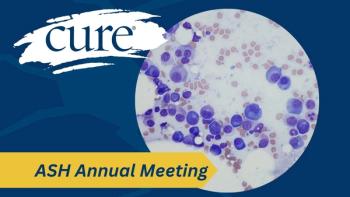
Treatment Approach in Multiple Myeloma
Transcript:
C. Ola Landgren, MD: After we talked about the diagnosis, we also talked about the therapy. During that same visit, when I told you that you did fulfill the criteria for multiple myeloma, I told you that we needed to start therapy. I talked to you about the different steps in the treatment. Had you looked anything up, before you came to me, on the treatment?
Aurora Torres: No, I did not.
C. Ola Landgren, MD: So, you heard about the diagnosis, and you heard about the treatment. I assume that it was quite overwhelming to learn about all of this information during that same visit.
Aurora Torres: Yes, it was.
C. Ola Landgren, MD: When you went home, how did you process that?
Aurora Torres: It was very difficult for me to process all of that in 1 day. I went home, and I just thought about everything that was said to me. A lot of it was confusing because there were a lot of terms that I didn’t understand, but once I started reading about them, they became a little clearer to me.
C. Ola Landgren, MD: I told you that the standard of care at the current time in the United States would be to offer a 3-drug combination. I told you that the standard of care in the United States would be to use a proteasome inhibitor with an immunomodulatory drug and a low dose of steroid. It could either be bortezomib with lenalidomide and dexamethasone or it could be carfilzomib with lenalidomide and dexamethasone. Those would be the 2 key options that we would use in the United States at the current time. And, in your case, we started you on bortezomib, lenalidomide, and dexamethasone. That’s the most common combination that is currently used. Did you read up on those drugs when you got home, after I told you about those?
Aurora Torres: I did a little research on them, but again, when you’re overwhelmed with information, it’s very difficult to understand some of it. I do better when I’m experiencing things like that. So, when I was under the treatment, I understood a lot of the things—for example, side effects that you can get from these treatments. I experienced a lot of them. I experienced fatigue, and I experienced a lot of pain with these treatments. But, prior to that, I didn’t know what to expect.
C. Ola Landgren, MD: We also talked about the necessity of moving forward from the combination therapy. We could do transplantation, or we could hold off with that. And then, we talked about whether or not to do maintenance. We will talk about those details further in a little bit. We had this conversation, during the first time, when we talked about treatment. We basically outlined a long period of time for therapy there.
Aurora Torres: Yes.
C. Ola Landgren, MD: At that time, did you know that the therapy had to be long, or was that new information for you?
Aurora Torres: That was new information for me. When you started talking about the stem cell transplant, I did a lot of research on that. In the beginning, I was adamant that I did not want it, but as time went on, I was a bit more open to it. I did research on it, and I spoke to other people who had it done. The Leukemia and Lymphoma Society recommended people who I could talk to who had been through these procedures already. Some of them called me and explained to me how their process went. This made me less afraid of having the procedure done. I became more open to it, and I agreed to it.
C. Ola Landgren, MD: But it was something that you were not really sure about?
Aurora Torres: No, I was not sure about it in the beginning.
C. Ola Landgren, MD: We talked about the fact that some people choose not to do it and some people choose to do it. We talked about the fact that if we could drive the disease all the way down to 0 with just therapy, it would potentially be a way where you could hold off on that. That’s something we did talk about.
Aurora Torres: Yes, and that sounded good to me. I figured, “Let’s go and do the stem cell transplant,” because it would be beneficial for me to have it done.
C. Ola Landgren, MD: Because the combination therapy did not bring it all the way down?
Aurora Torres: Right.
C. Ola Landgren, MD: I think you absolutely did the right thing.
Transcript Edited for Clarity




